Create a VMware vSphere 6.7 infrastructure by installing vCenter Server with an external database (SQL Server)
- VMware
- VMware vCenter Server (VCSA), VMware vSphere
- 14 February 2024 at 15:15 UTC
-

- 5/5
4.8. Install VMware vCenter Server
Now that all the prerequisites are installed and configured, you can finally move on to installing VMware vCenter Server on your server on Windows Server.
Double-click on the CD/DVD drive.
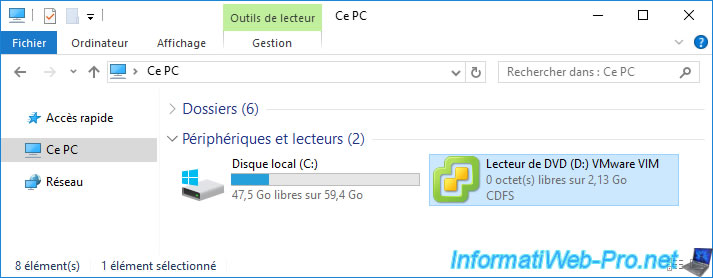
In the VMware vCenter Server for Windows installer that appears, click Install.
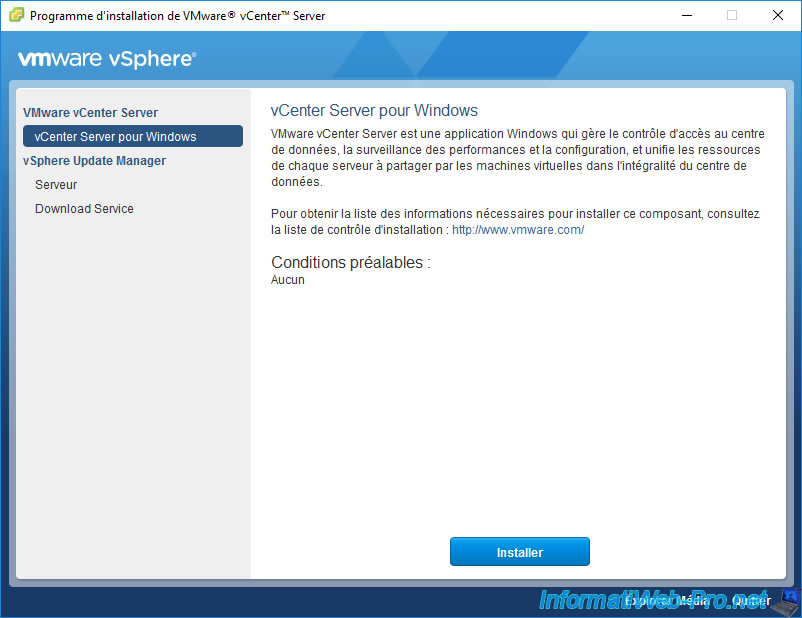
The VMware vCenter Server 6.7.0 installer appears.
Click Next.
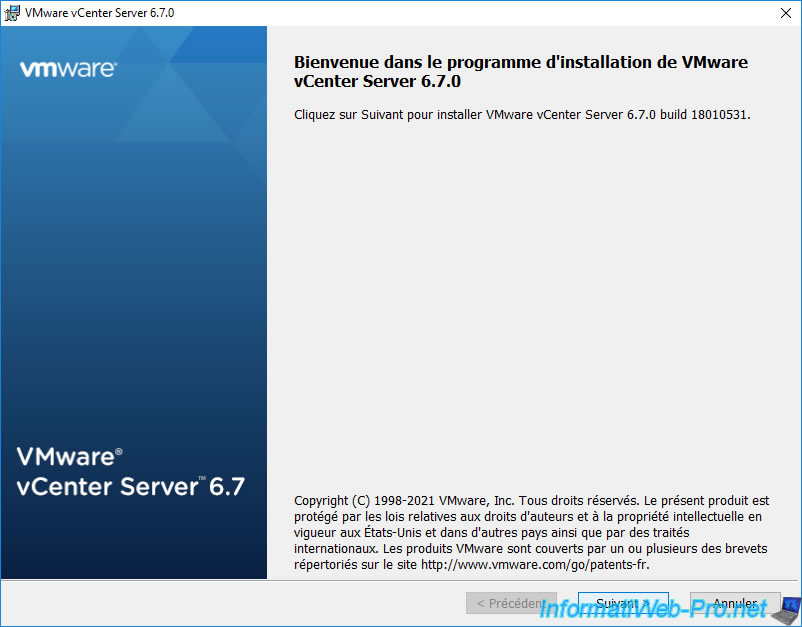
As you can see, you can deploy "vCenter Server" and the PSC (Platform Services Controller) on the same server or install each part on a separate server.
However, it is recommended to install everything on the same server (integrated deployment), because the deployment of an external PSC (Platform Services Controller) has been deprecated since version 6.7 of vSphere and this will no longer be possible with new versions of vCenter.
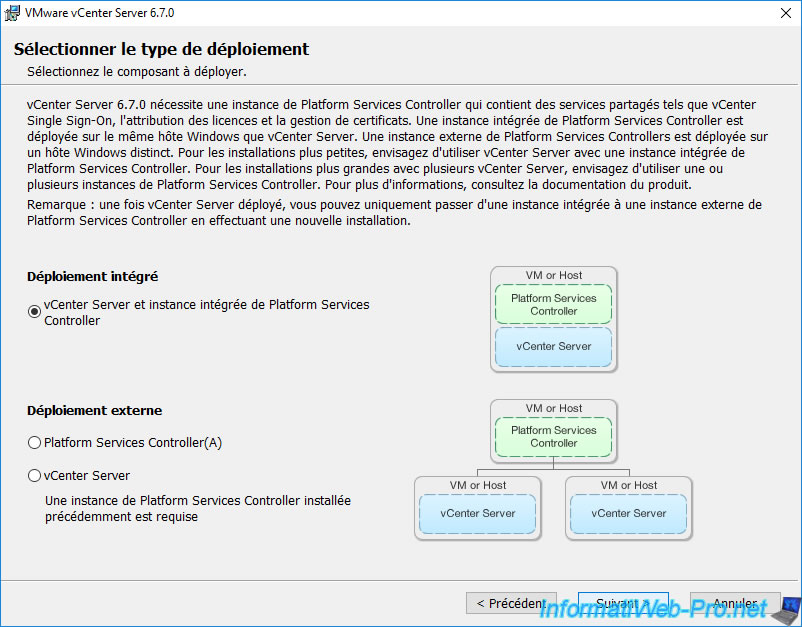
Provide the domain name of your server where you are installing VMware vCenter Server.
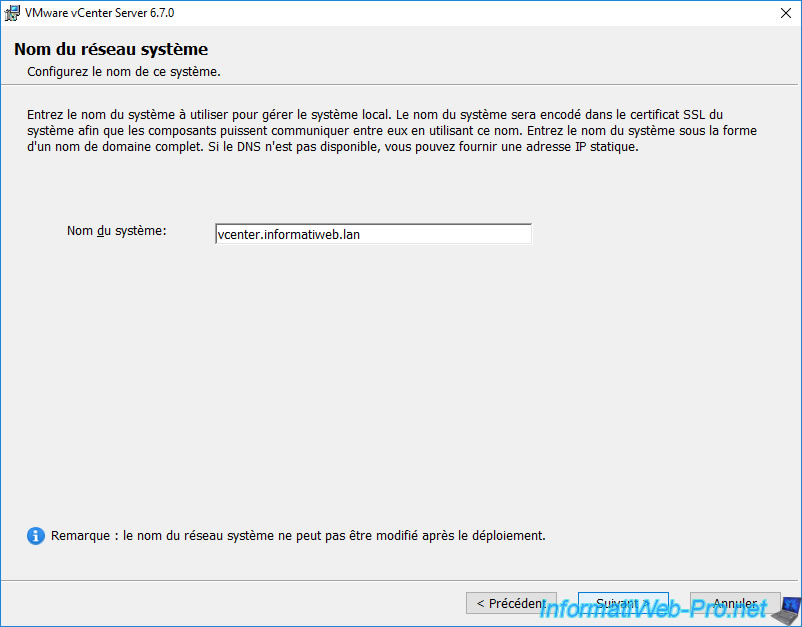
If no DNS record of type "AAAA" (IPv6) exists on your DNS server for the domain name you just specified, this warning will be displayed:
Plain Text
The specified name can be resolved to an IPv6 address but the name could not be found in DNS and/or not appear to be a fully-qualified name (FQDN) for IPv6. ...
If you have not configured IPv6 on your network, this is normal and you can ignore this warning (as indicated in this message).

vCenter Single Sign-On allows the user to authenticate once on your VMware vCenter server and then use the different vSphere components using a token system.
This will avoid having to authenticate again for each new vSphere component used.
By default, the vCenter Single Sign-On (SSO) domain name that will be used is: vsphere.local.
Since there will only be one vCenter SSO domain in our case, we will use the default one: vsphere.local.
Provide a password for the vCenter Single Sign-On (SSO) "administrator" account and provide a site name.
Default: Default-First-Site. This notion of sites is similar to managing multiple Active Directory sites (for those who know).
Source : How vCenter Single Sign-On Protects Your Environment
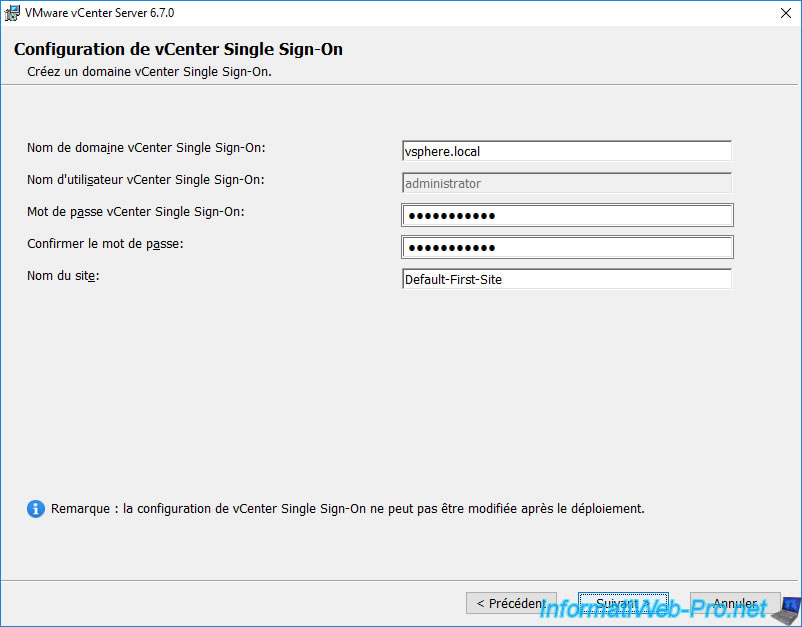
If you want to use an external database using Windows authentication, you will need to select "Specify a user service account".
However, this is not our case, since the authentication will be carried out with a local account created on our SQL Server, so we can select "Use Windows local system account".
For more information about this option, refer to the "Using a User Account for Running vCenter Server" page in the official VMware documentation.
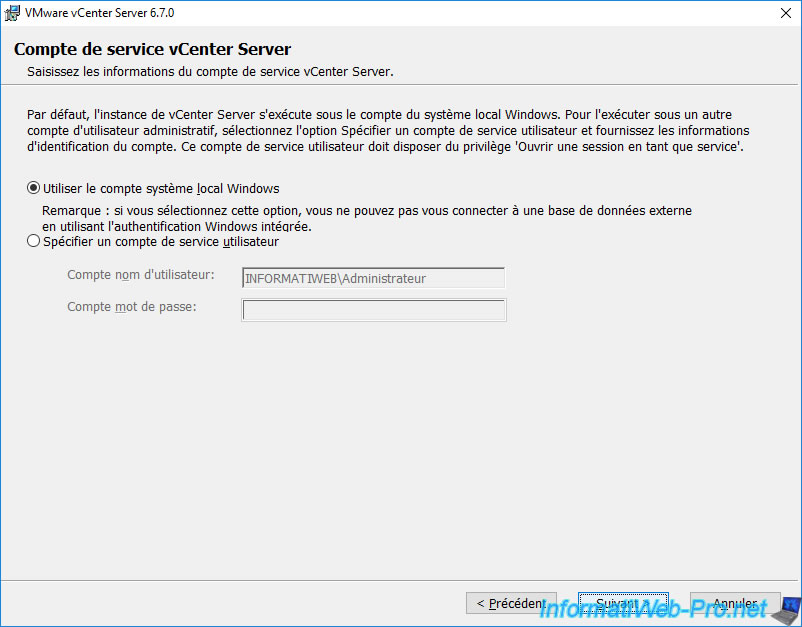
For database settings, select "Use an external database" and select "vCenter_SQL" from the "DSN Name" list.
Note: if you have correctly configured the ODBC data source in 64 bits with the native SQL client in version 11.0 as explained previously in step "4.7. Configure the ODBC data source for VMware vCenter Server" of this tutorial, this source should appear in the “DSN Name” list.
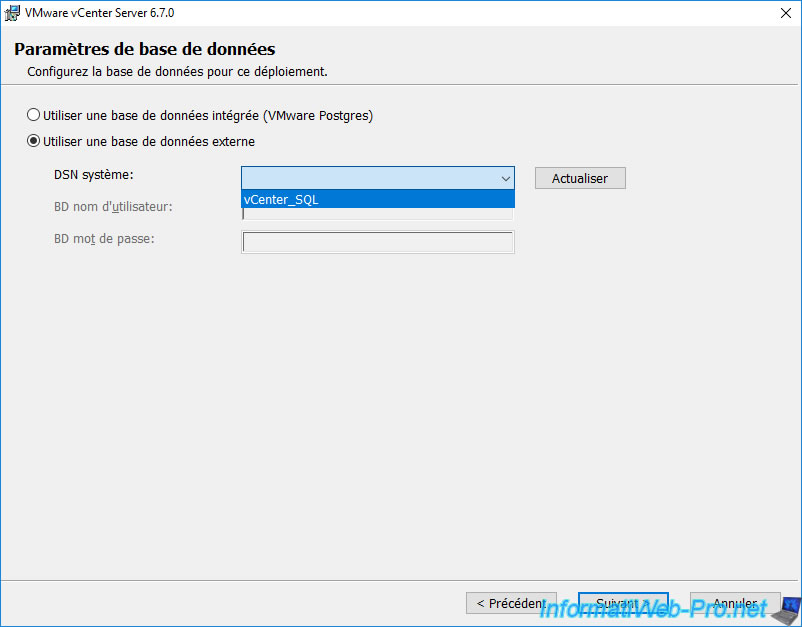
Next, provide the username previously created on your SQL Server, as well as its password.
In our case, we named this SQL user: vpxuser.
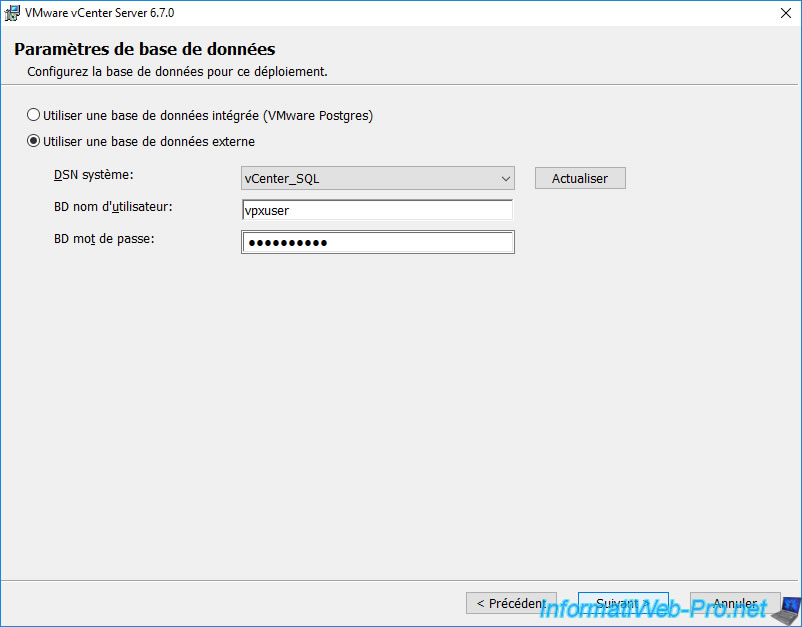
The list of ports used by VMware vCenter Server 6.7.0 appears.
Leave those configured as default and click Next.
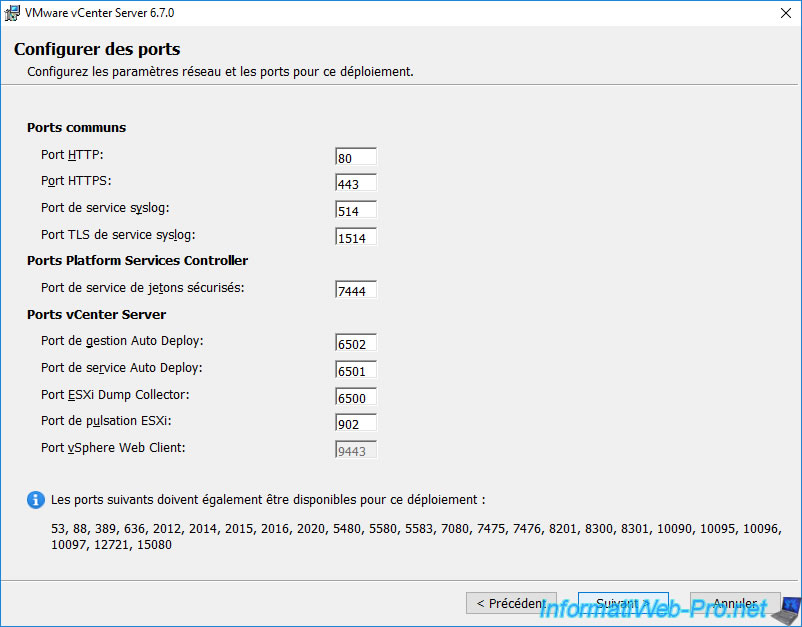
Leave the default installation directories and click Next.
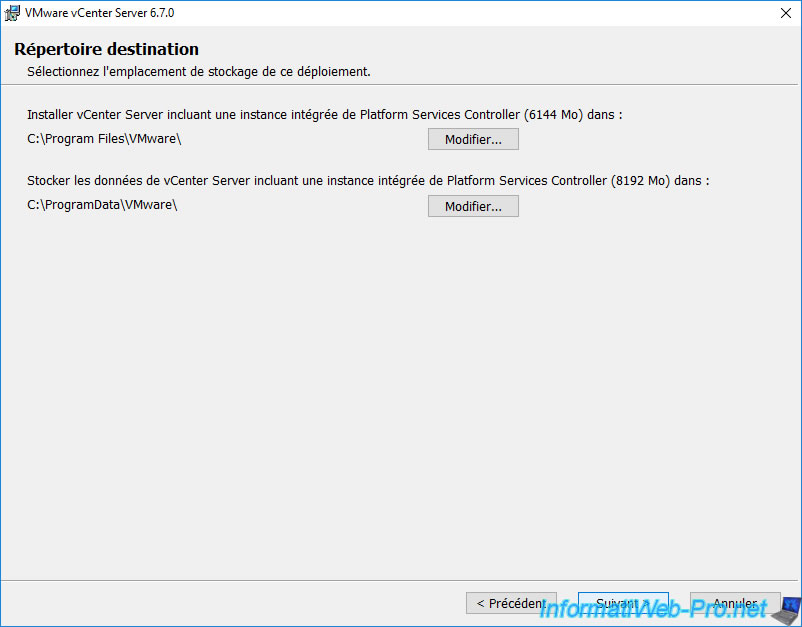
In business, it is common to refuse participation in product improvement programs that we install for reasons of confidentiality.
So, uncheck the box “Join the VMware Customer Experience Improvement Program” and click Next.
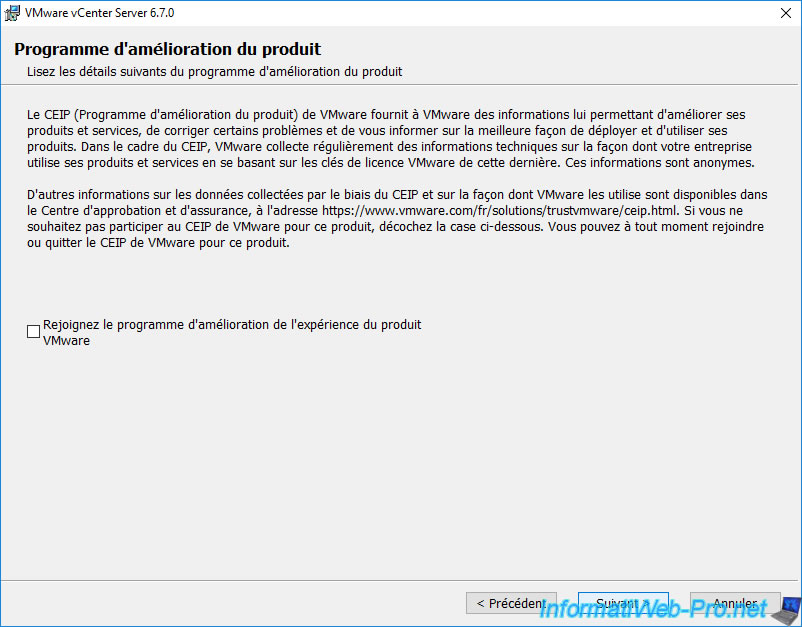
A summary of the VMware vCenter Server deployment configuration appears.
Click Install.
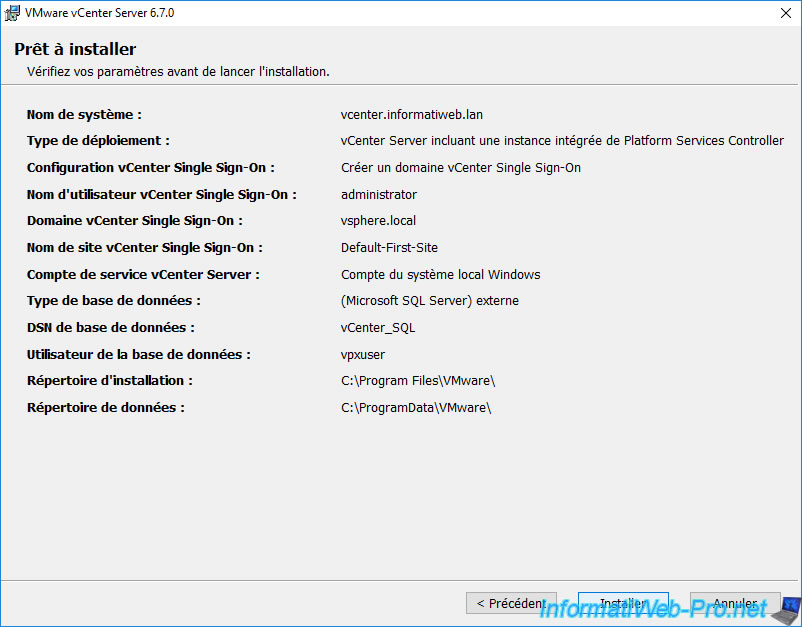
The installation begins.
Note: this may take time.
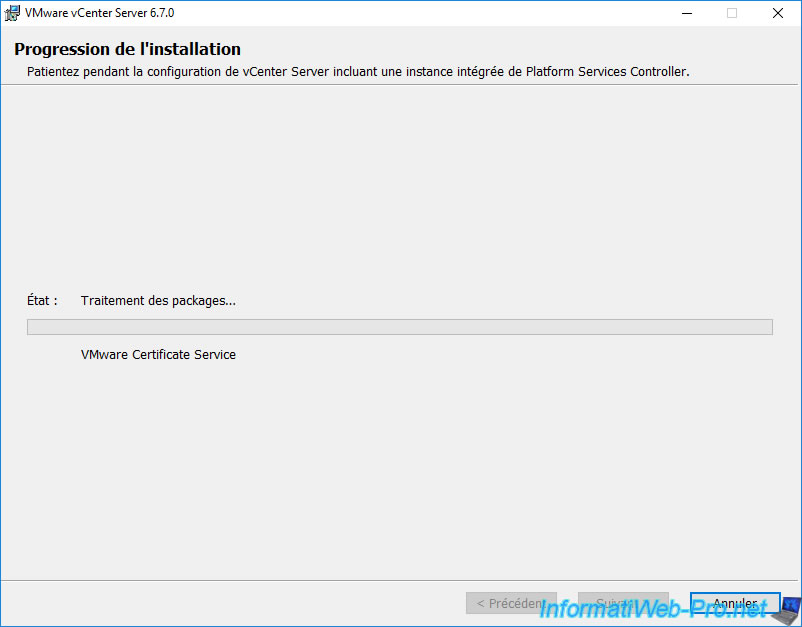
Once the installation is complete, you can click “Launch vSphere Web Client” to open the VMware vCenter Server web interface.
Then, click "Finish" to close this window.
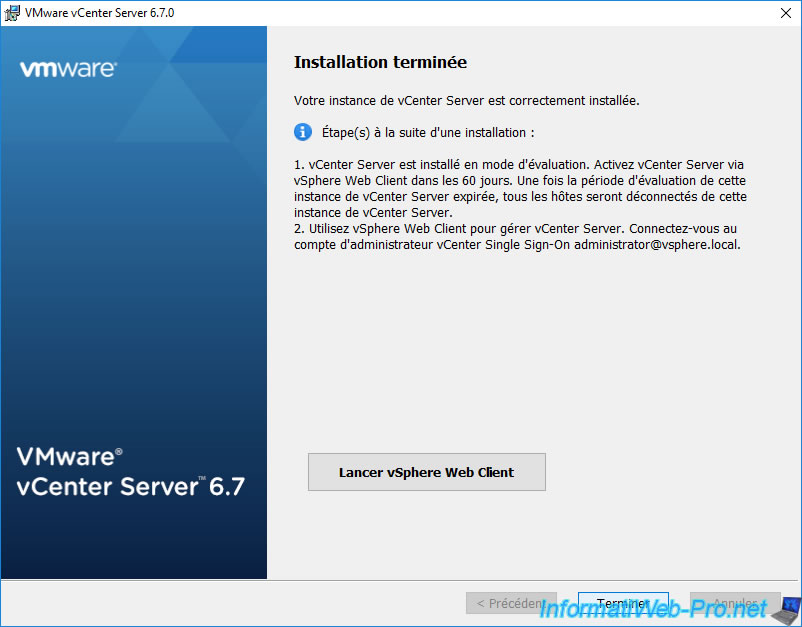
5. VMware vCenter Server web interface
As noted on the page that appears, the old Flash-based "vSphere Web Client (Flex)" is deprecated in vSphere 6.7 and the Flash plugin is likely missing from your computer since Adobe programmed Adobe Flash Player to ask you to uninstall it from your computer.
In short, click on “Launch vSphere Client (HTML5)” to use the new version of web client based on HTML5.
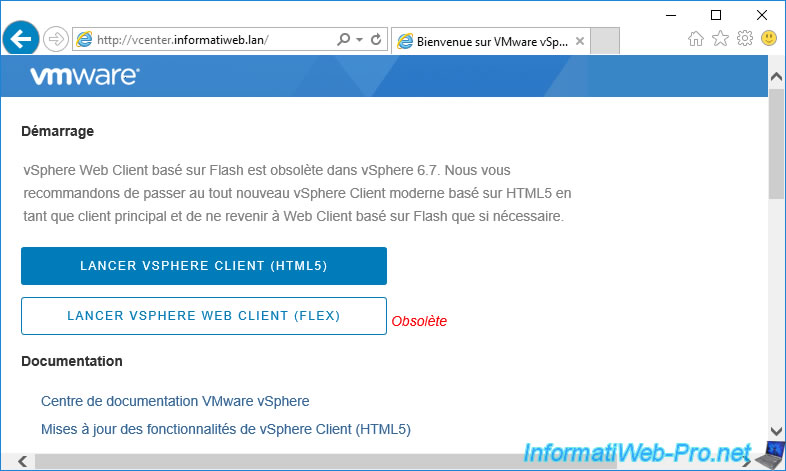
Ignore the security certificate (SSL) warning by clicking: Continue to this website.
Note: this warning is due to the fact that the SSL certificate used by default by VMware vCenter Server is self-signed and therefore does not come from a recognized certification authority.
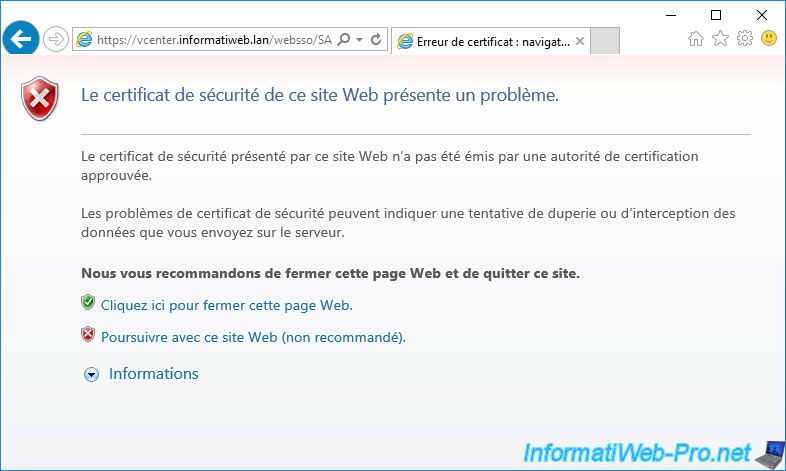
The “VMware vSphere” login page appears.
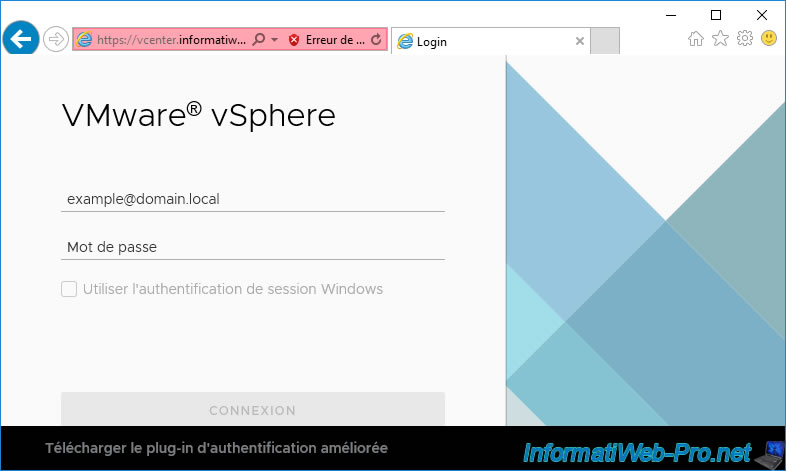
6. Services installed on Windows Server
When you install "VMware vCenter Server" in Windows version, you will notice that many VMware services have been installed, including this one: VMware vCenter Configuration Service.
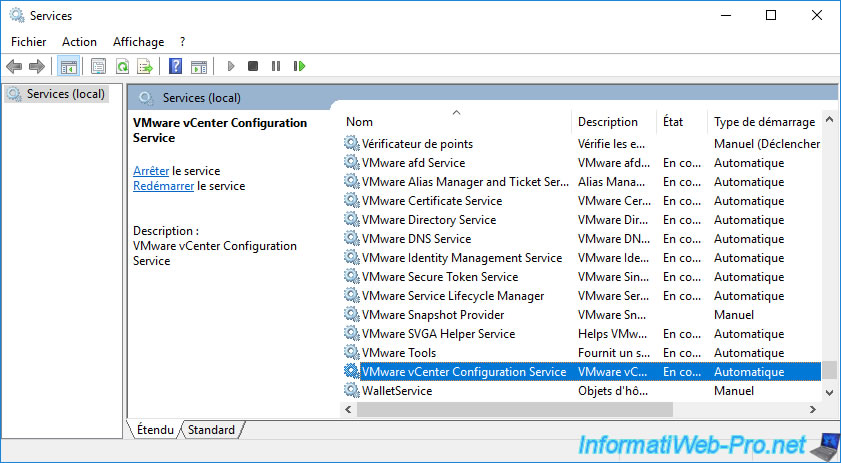
If you view its properties and go to the "Dependencies" tab, you will see that it depends on other VMware services.
And these VMware services themselves depend on other VMware services.
In short, if there is a problem with VMware vCenter Server, it is possible that one or more of these services are stopped due to an error.
In this case, try restarting them and if that doesn't work, look in Windows event viewer to try to find the source of the problem.
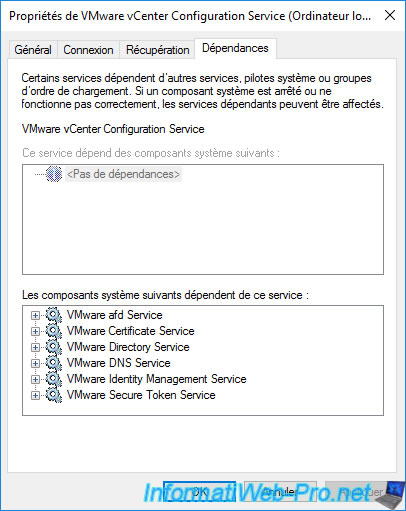
Share this tutorial
To see also
-
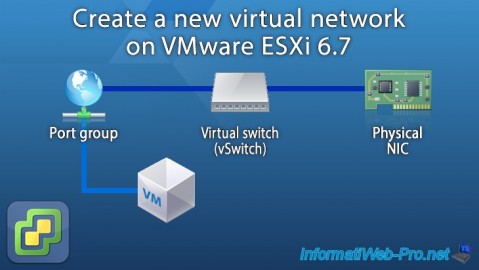
VMware 2/24/2023
VMware ESXi 6.7 - Create a new virtual network
-
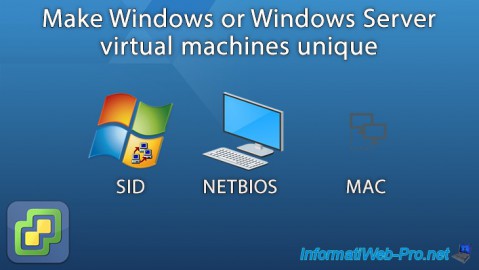
VMware 9/23/2022
VMware ESXi 6.7 - Make virtual machines unique
-
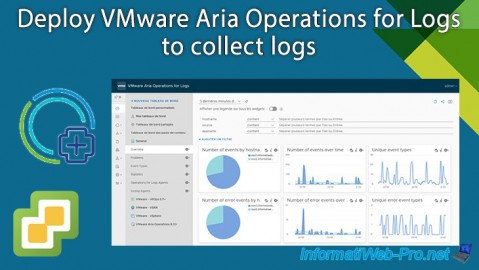
VMware 8/9/2024
VMware vSphere 6.7 - Collect logs with VMware Aria Operations for Logs
-
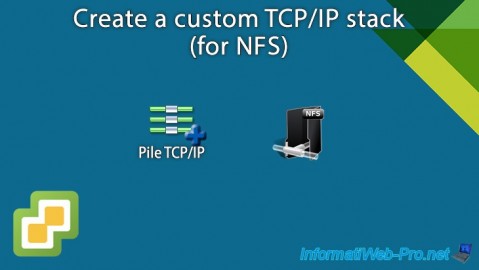
VMware 9/20/2024
VMware vSphere 6.7 - Create a custom TCP/IP stack (for NFS)

No comment